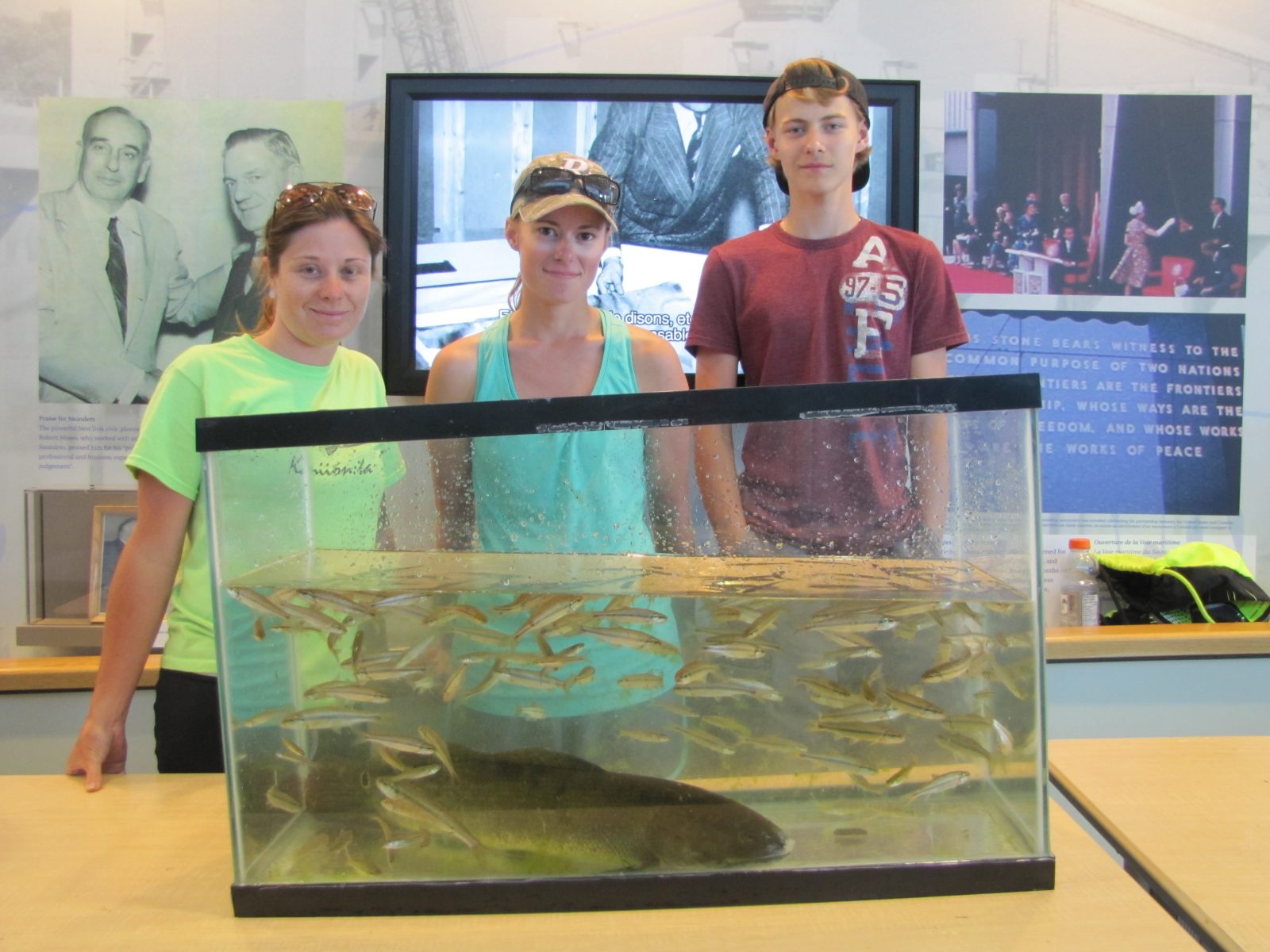CORNWALL, Ontario – Matt Windle of the St. Lawrence River Institute of Environmental Sciences held a presentation on the slippery slope that the eels of the St. Lawrence River have experienced at the annual Fish and Eel Day held at the Ontario Power Generation Visitor’s Centre on Saturday, June 25.
“Fish and Eel day is one of our most popular workshops about nature along the St.Lawrence River,” Windle said. “Today is an opportunity to learn about the bio diversity of the river and about the native and invasive species living there.”
One of the invasive species that Windle is concerned about is the Asian carp, particularly one species of Asian carp, the grass carp, an example of which was found in the St. Lawrence River near Montreal.
The worry about the grass carp is the amount of vegetation that they can eat.
“These fish grow quickly, they breed a lot and can eat 20 percent of their body mass in vegetation every day,” Windle said.
The grass carp was intentionally introduced to North America by the United States, which wanted to use the fish to control the vegetation in the Mississippi River. The grass carp began to escape and make their way north however.
Windle believes though that the grass carp found in the St. Lawrence was intentionally released there.
“There are too many turbines and too many dams for a fish that size to navigate for it to successfully make it this far north,” he said.
Invasive species, pollution and a loss of habitat has threatened native species living in the St. Lawrence, including the eel.
“At one time they were the most abundant fish in the river,” said Windle. “The current population is about one-to-two percent of what they once were.”
One method to help the eels navigate the river are the eel ladders on the dams, like the one operated by Ontario Power Generation. The ladders help the eels make their way up stream.
The eels grow up in Lake Ontario, but every 20 years or so, they travel along the St. Lawrence River and out to sea to return to their place of birth to spawn.
Windle admits that there is still a lot that we do not know about eels. Things like where the eels spawn and how they get back remain a mystery.
Workshops like Fish and Eel Day help the community learn the valuable information that we do know about this native species.



